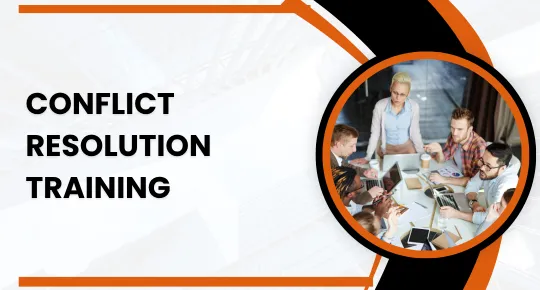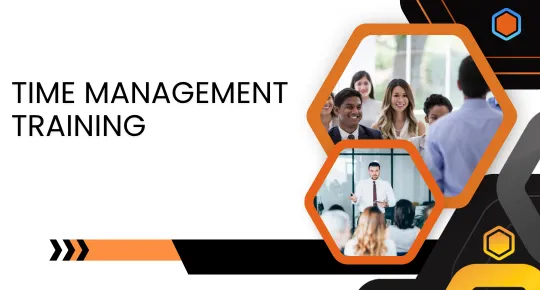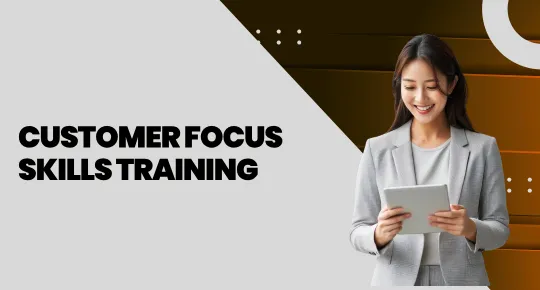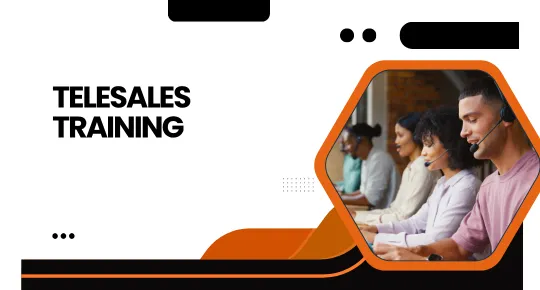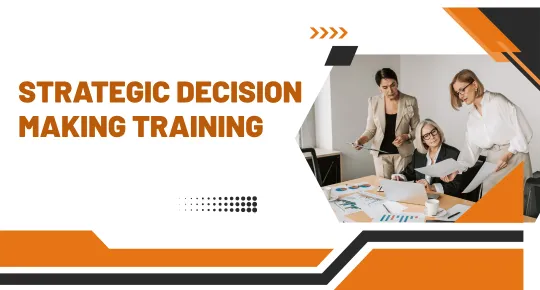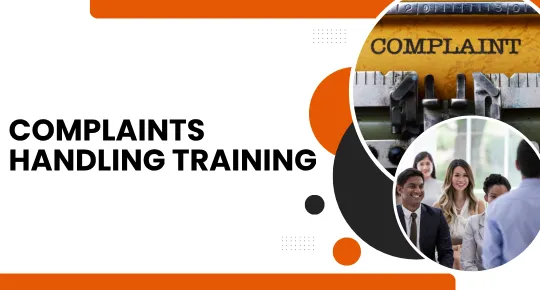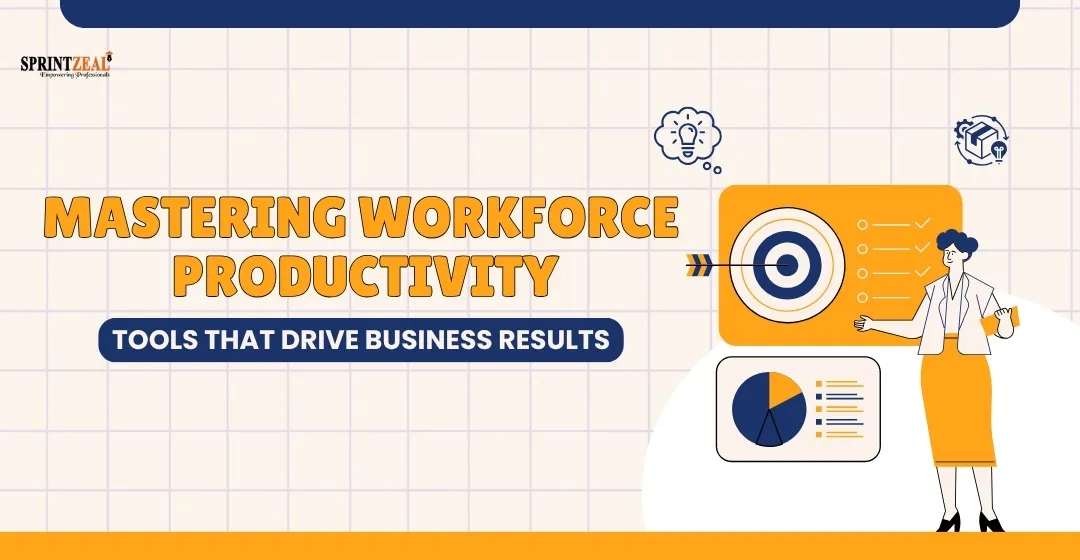Why Presentation Skills Are a Core Part of Modern Education
-
 By Sprintzeal
By Sprintzeal - Published on Nov 25 2025
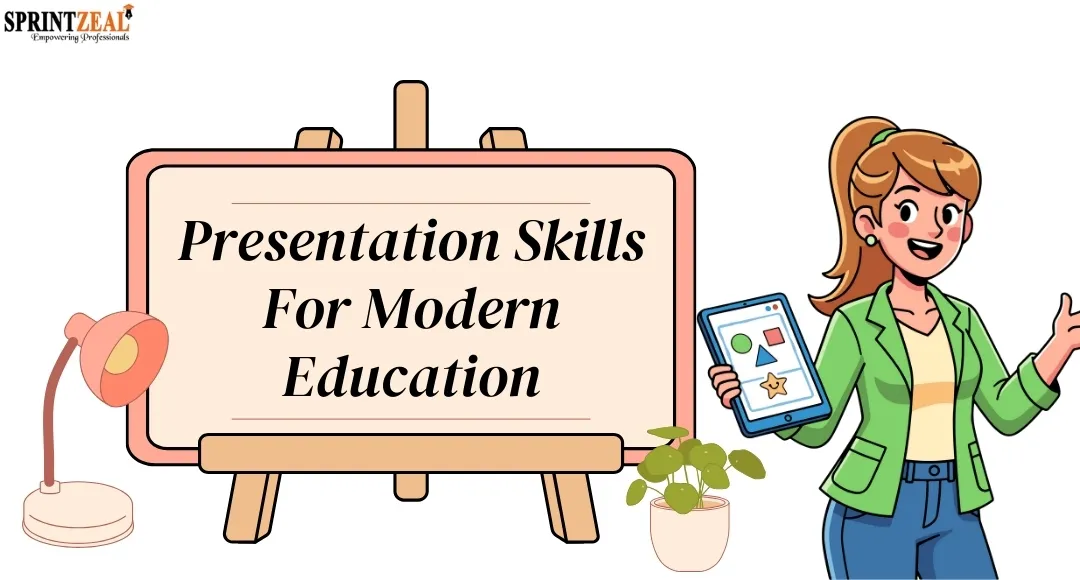
Knowledge presentation has become equally important as knowledge acquisition. Knowledge presentation is defined as the organization of acquired information into a coherent structure to be delivered or transmitted to other people through any mode of communication. Thus, contemporary education cannot be based only on memorization or the completion of examinations. It should involve students providing clear explanations of ideas and conveying messages tailored to different audiences.
The shift is present at every layer of the learning process. In schools, it means that presentations help students organize information and make choices about what is most important to them. Understanding deepens as content organization forces learners to grapple with difficult choices between competing ideas, all deemed significant within a short period available for exploration.
Table of Contents
Presentation Skills in College: From Assignments to Real-World Practice
Presentation skills play a central role in the college transfer of research, data, and course content into well-organized arguments. Students underline relevant and insightful findings from group work, seminar discussions, or capstone defense finals. Most learners are juggling tight deadlines with multiple presentation assignments. Hence, they seek professional help to transform complex material into clear and concise slides. In the midst of a busy semester, students who think do my presentation today are actually trying to find time for one more assignment. Such an online tool helps ensure that this particular task does not become a product of apparent haste, masked by another laborious undertaking.
Presentations provide more practical training, which is related to real work situations, than achieving grades. The student learns how to present ideas, making a distinction between content and context, and tuning the tone of presentation under cross-examination. It builds confidence and inculcates important habits applicable in any office, ranging from articulate brevity to effective visual communication.
Why Presentation Skills Matter Across Modern Education Levels
Today, the importance of presentation skills is widely recognized as a core competency in education. Oral communication is consistently ranked as one of the top skills employers expect from graduates, often placed above technical knowledge.
Students who learn the clarity of speech and the organization of ideas, accompanied by practical visual usage, not only achieve high grades but also prepare themselves for future roles that may involve explaining concepts to others. This justifies and drives the presentation training efforts in schools, colleges, and professional programs.
Building confident communicators, not just test-takers
Practicing presentations enables students to go beyond simply memorizing content for test answers. More practice presentations help them realize the gaps in their understanding and discover ways to explain complex concepts in simple terms. Frequent oral activities build confidence, as evidenced by increased participation, while also ensuring long-term retention of content knowledge.
Turning subject knowledge into clear, persuasive stories
Content knowledge is just the beginning. Students must organize that knowledge into a story others can follow. The benefits come from pushing students to identify key points, use evidence, and explain their significance. This develops critical thinking by enabling the identification of patterns.
Preparing students for the real world
You need such skills for the real world, which includes job interviews and client pitches. These skills are among the most sought-after requirements by employers. They determine hiring and promotion. Graduates who have practiced speaking, answering questions from the audience, or using slides adjust quickly to these demands.
Core Elements of Effective Student Presentations
So, beyond discussing why presentation skills are essential, what makes a good presentation? This section touches on how students can perfect theirs.
Structuring ideas: from introduction to takeaway
A clear introduction, a specific number of points, and a focused conclusion. That reduces the load on the audience. Aim to pause immediately after finishing a slide. Then, mention the main takeaway in a brief summary. That will make it easier for others to follow the arguments and remember what’s important.
Visual literacy: slides, media, and data clarity
Richard Mayer’s multimedia learning shows that people learn better from well-chosen words and pictures than from words alone, especially when visuals are clean and not overloaded. University teaching centers echo this, recommending limited text, high contrast, and simple charts that highlight patterns instead of decorative graphics. Students who treat each slide as a single, focused idea support understanding rather than distract from it.
Delivery skills: voice, body, and time
You can have the best content, but if you deliver it poorly, it fails. Minimum effort might take you through the slides, but that won't help anyone keep track. Vary your tone, try looking at the audience instead of your notes, and maintain a loose body language. Even practicing the talk once or twice makes a huge difference; it enables clear articulation in speaking and prevents mumbling or rushing through points.
Conclusion
Presentation skills are one of the core literacies in modern education because knowledge is always transferable to real communication tasks. The mode through which students organize their ideas structurally, develop clear visuals, express themselves confidently, and answer questions forms the understanding of the strengths of a presentation.
This makes collaboration possible and instills critical thinking that can be directly applied in interviews with teams or even in leading roles, as classes continue to shift toward active learning engagements based on actual implementation.
Subscribe to our Newsletters
Popular Programs
Trending Posts
Streamlined Success: Blending Digital Tools and Physical Planners for Optimum Productivity in 2025
Last updated on Sep 17 2025
The 3 AI-Powered Email Warmup Tools You Should Consider for Outreach
Last updated on Aug 26 2025
Top 10 Productivity Training Courses for Workplace
Last updated on May 23 2024
Managing Work More Effectively: Top Picks for Organizing Team Tasks
Last updated on Apr 29 2025
Mastering Workforce Productivity: How Time and Communication Tools Drive Business Results
Last updated on Jun 12 2025
Designing Training Slides to Simplify Complex Concepts
Last updated on Oct 22 2025
Categories
- Other 66
- Agile Management 56
- Cloud Computing 51
- Project Management 170
- Big Data 58
- Business Management 82
- Digital Marketing 73
- IT Service Management 29
- Programming Language 50
- AI and Machine Learning 68
- IT Security 109
- Quality Management 77
- IT Hardware and Networking 25
- Microsoft Program 4
- Workplace Skill Building 12
- Risk Management 9
- Information Security 8
- Leadership and Management 7
- Corporate Training and Development 1
Trending Now
Top 10 Productivity Training Courses for Workplace
ArticleSelf-Introduction for Interview: Tips & Best Examples
ArticleManaging Work More Effectively: Top Picks for Organizing Team Tasks
Article6 Best LMS for Employee Training Your Team Won’t Hate
ArticleMastering Workforce Productivity: How Time and Communication Tools Drive Business Results
ArticleTop Reasons Why Binding Format Matters in Training Manuals
ArticleThe 3 AI-Powered Email Warmup Tools You Should Consider for Outreach
ArticleTop Team Leader Job Interview Questions & FAQs
ArticleHow Cognitive Testing Can Optimize Agile Team Performance
ArticleStreamlined Success: Blending Digital Tools and Physical Planners for Optimum Productivity in 2025
ArticleDesigning Training Slides to Simplify Complex Concepts
Article
